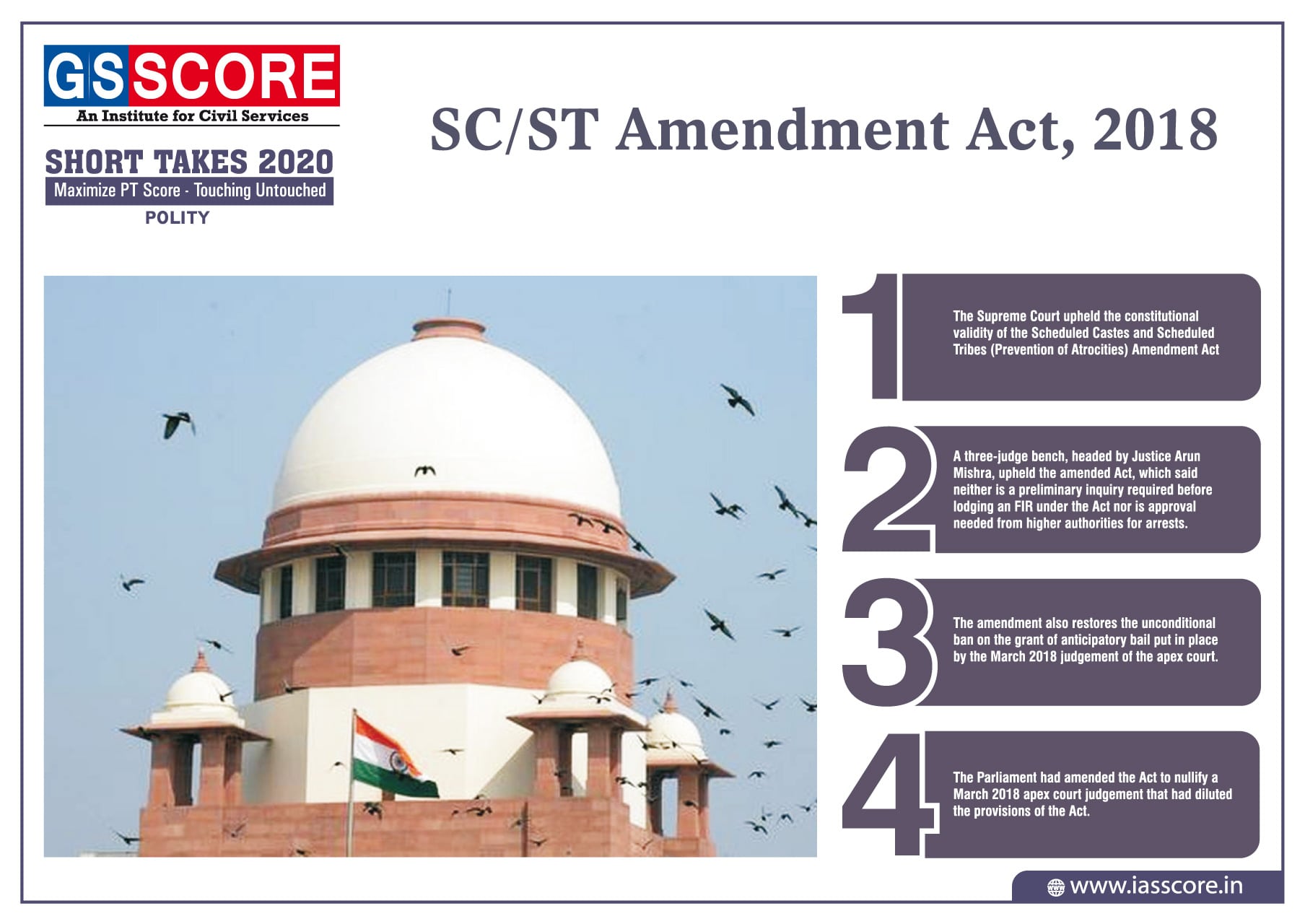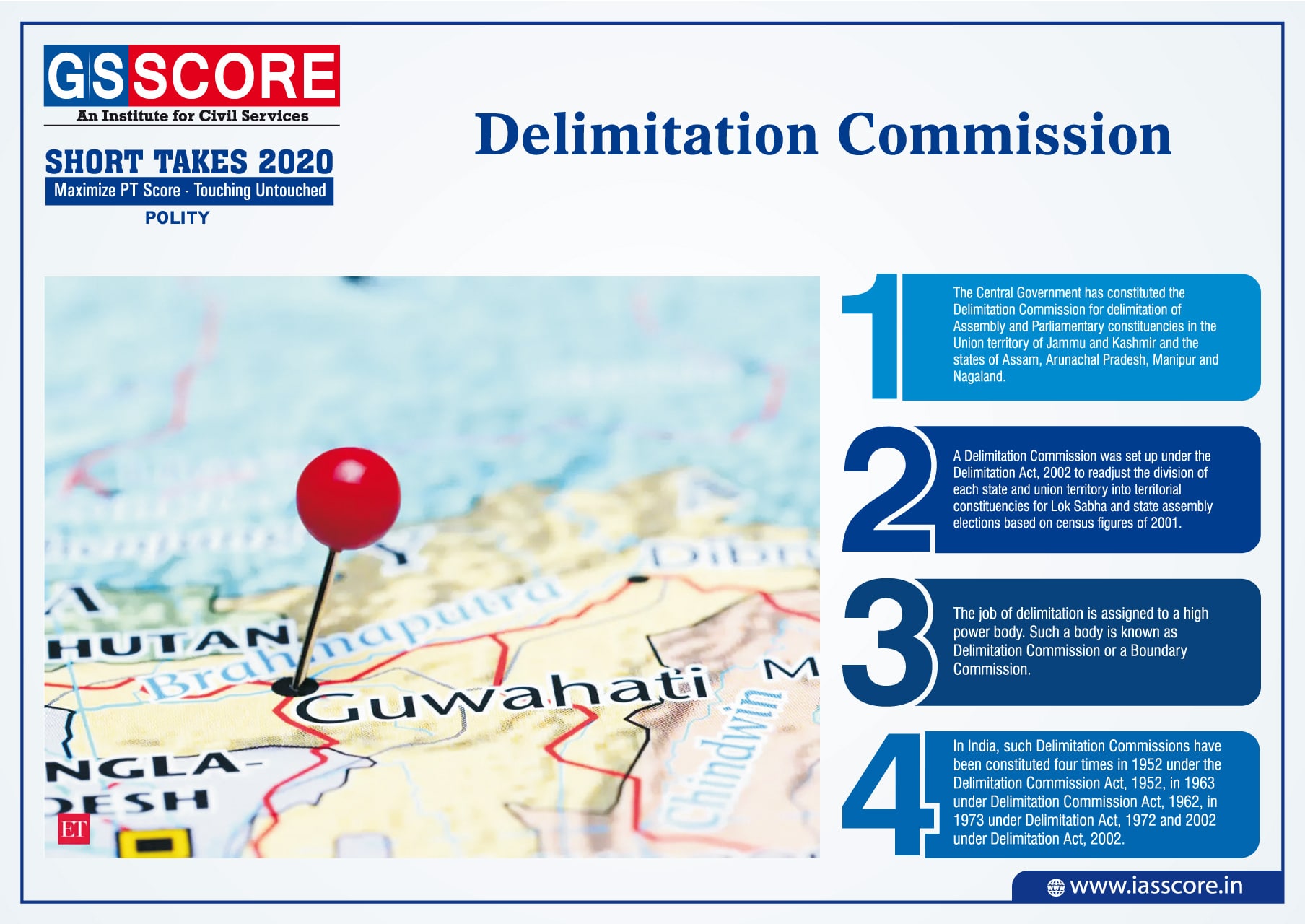Economy: Revision Test 2
Economic impact of Coronavirus
Context
Oxford Economics warned that the spread of Coronavirus to regions outside Asia could cost the global economy 1.3% off global growth in 2020, the equivalent of $1.1 tn in lost income.
About
- Coronavirus (CoV): CoV also known as CoVID-19 are a large family of viruses that cause illness ranging from the common cold to more severe diseases such as Middle East Respiratory Syndrome (MERS-CoV) and Severe Acute Respiratory Syndrome (SARS-CoV).
- A novel Coronavirus (nCoV) is a new strain that has not been previously identified in humans.
- Means of transfer: Coronaviruses are zoonotic, meaning they are transmitted between animals and people.
- Several known Coronaviruses are circulating in animals that have not yet infected humans.
- Originated in China: On 31 December 2019, the WHO China Country Office was informed of cases of pneumonia of unknown aetiology (unknown cause) detected in Wuhan City, Hubei Province of China.
- A novel Coronavirus (2019-nCoV) was identified as the causative virus by Chinese authorities on 7 January.
- Symptoms: Common signs of infection include respiratory symptoms, fever, cough, and shortness of breath and breathing difficulties.
- In more severe cases, the infection can cause pneumonia, severe acute respiratory syndrome, kidney failure, and even death.
- Health impact: As of 22nd February 2020, 77,816 cases of Coronavirus have been registered around the world. It has resulted in 2,360 deaths.
- Currently, COVID-19 is affecting 32 countries and territories around the world and 1 international conveyance (the "Diamond Princess" cruise ship harboured in Yokohama, Japan).
- COVID-19 has already reached Europe, the USA, and the Middle East.
- Africa does not yet have any confirmed cases.
- Coronavirus has reached India and infected patients were reported from Italy, China etc.
- Economic consequences: The disease has now turned into a pandemic and as it spreads to different countries, economic damages around the world are mounting. The maximum impact will be on China, but other countries are not immune to the effects because most economies are now globally integrated.
- The outbreak has the potential to cause severe economic and market dislocation.
The economic impact of Coronavirus
- Chinese economy: China has become an indispensable part of the global business. Due to the spread of Coronavirus, various economic activities in China have taken a hit. Businesses are dealing with lost revenue and disrupted supply chains due to China’s factory shutdowns. Travel to and from China has also been restricted.
- According to a Reuter’s poll of economists, China’s economic growth expected to slow to 4.5% in the first quarter of 2020– the slowest pace since the financial crisis.
- Countries most hit: Based on the value of its exports to mainland China and Hong Kong relative to GDP, Taiwan is likely to be the hardest hit, followed by Vietnam, Malaysia, and South Korea.
- Trade and commerce:Chinese economy accounts for 16% of global output. China has grown into the world's factory, churning out products such as iPhone, cars, luxury products and driving demand for commodities like oil and copper.
- Factory shutdowns are causing a shortage of products and parts from China, affecting companies around the world, including Apple and Nissan.
- Unavailability of workers: Factories delayed opening after the Lunar New Year as workers stayed home to help reduce the spread of the virus.
- Electronics, consumer goods, chemicals, auto components and pharmaceuticals are seen as the most vulnerable sectors.
- Pharmaceuticals: Prices of some bulk drugs have already risen.
- Global supply chains: There is a threat to global supply chains (GVCs). Qualcomm (QCOM), the world's biggest maker of smartphone chips, warned of uncertainty around demand for smart-phones, and supplies needed to produce them.
- Auto parts shortages have forced Hyundai (HYMTF) to close plants in South Korea and caused Fiat Chrysler (FCAU) to make contingency plans for plants in Europe.
- Automobile sector: Car plants across China have been ordered to remain closed, preventing global automakers Volkswagen, Toyota (TM), Daimler (DDAIF), General Motors (GM), Renault (RNLSY), Honda (HMC) and Hyundai (HYMTF) from resuming operations in world's largest car market.
- Oil industry: The petrochemical sector serves as the backbone for various other manufacturing and non-manufacturing sectors such as infrastructure, automobile, textiles and consumer durables. China is the world’s biggest oil importer. With Coronavirus hitting manufacturing and travel, the International Energy Agency (IEA) has predicted the first drop in global oil demand in a decade, causing a drop in oil prices.
- The oil market is currently facing a situation called ‘contango’,wherein spot prices are lower than futures contracts.
- Industries are realigning their strategy amid energy demand forecasts.
- Crude-dependent sectors:Sectors such as aviation, shipping, road and rail transportation are likely to gain from a sudden drop in crude oil prices.
- Benefit to oil-importing nations:Major oil importers such as India will get a better bargain with reduced oil prices.
- Case of India:India is the world’s third-largest oil importer and fourth-largest buyer of liquefied natural gas (LNG). New oil dynamics can help India contain its current account deficit; maintain a stable exchange regime; and consequently inflation. This could be a good time for Indian airlines to make up for losses.
- Travel industry:Chinese tourist numbers are now falling sharply as China bars its citizens from group tours abroad, and many countries refuse or restrict the entry of Chinese.
- Many trade shows and sporting events in China and across Asia have been cancelled or postponed.
- Popular Chinese destination to lose: Judging by the size of Chinese visitors’ expenditures relative to GDP, popular destinations such as Thailand, Vietnam, and Singapore will take the hardest hit. Japan will also be adversely affected especially with Summer Olympic Games being scheduled to start in Tokyo on July 24.
- Case of India: India recently announced the temporary suspension of the e-visa facility for Chinese travellers and foreigners residing in China. Since air travel between India and China had grown significantly owing to increased business activities, business travel segment will take a hit.
- Financial sector: As infections increase, especially in Asian financial hubs such as Hong Kong and Singapore, financial deals could be disrupted. It can disrupt economic activities due to supply-side constraints, which will result in market volatility.
- Gold prices:Due to fear and uncertainty in markets about the scale and impact of the virus outbreak, gold prices have risen as the commodity is considered a haven.
- India’s Trade: India imports a bulk of its raw materials from China. Scarcity of some raw materials will lead to higher prices.India must leverage the lower oil prices and increase its exports amidst a shortage of Chinese exports to the world market.
- Rupee value: Exchange rate (rupee against the dollar) is rising, which is also leading to higher costs.
Economic measures initiated:
- China: People's Bank of China cut a key interest rate and injected huge amounts of cash into markets to help take the pressure off banks and borrowers. New tax breaks and subsidies have been announced to help consumers.
- Central banks in neighbouring countries including Sri Lanka, Malaysia, Thailand and the Philippines have cut interest rates
National Logistics Policy
Context
Union Minister of Commerce and Industry of the policy reviewed the draft National Logistics Policy and proposed action plan for implementation prepared by the Department of Logistics, Ministry of Commerce and Industry.
About
- The draft National Logistics Policy has been prepared in consultation with the Ministries of Railways, Road Transport and Highways, Shipping and Civil Aviation and forty-six Partnering Government Agencies (PGAs).
- Objective: To streamline rules, address supply-side constraints, lower logistics costs and ensure greater competitiveness for Indian products worldwide.
- National Logistics e-marketplace: A National Logistics e-marketplace will be created as a one-stop marketplace.
- It will involve simplification of documentation for exports/imports and drive transparency through digitization of processes involving Customs, PGAs etc in regulatory, certification and compliance services.
- Institutional Framework for policy: For the new logistics framework, four committees/councils will be constituted:
- National Council for Logistics, chaired by the Prime Minister.
- Apex inter-ministerial Committee, chaired by the Minister of Commerce and Industry.
- India Logistics Forum chaired by the Commerce Secretary with representation from key industry/business stakeholders and academia.
- Empowered task force on logistics will be created, as a standing committee chaired by the head of the Logistics Wing.
Need for National Logistics Policy
- Unregulated and fragmented logistics sector: India’s logistics sector has remained fragmented and unregulated, despite its centrality to economic growth.
- Complex sector: The sector is very complex with more than 20 government agencies, 40 PGAs, 37 export promotion councils, 500 certifications, 10000 commodities, 160 billion market sizes along with 12 million employment base.
- The national logistics policy will clarify the roles of the Union government, state governments and key regulators.
- High cost: The cost of logistics for India is about 14 per cent of its GDP and it is far higher as compared to other countries.
- Lack of adequate infrastructure: Almost 25-30% of fruits and vegetables produced in India are wasted due to lack of cold chain infrastructure.
The draft National Logistics Policy
- Optimise modal mix: The draft policy has sought to optimize the modal mix (road-60%, rail-31%, water-9%) to global benchmarks (road - 25-30%, rail - 50-55%, water - 20-25%) and promote the development of multi-modal infrastructure.
- Logistics Wing: The policy recommends setting up a Logistics Wing that will be the nodal agency tasked to identify key projects for driving first mile and last mile connectivity and to optimize the modal mix to identify commodity and corridor for the most cost-effective mode of transport.
- Logistics centre of Excellence: Encourage industry, academia and government to come together to create a logistics Centre of Excellence, and drive innovation in the logistics sector.
Objectives of the Logistics Policy
- Providing an impetus to trade and hence economic growth by driving competitiveness in exports.
- Doubling employment in the logistics sector by generating additional 10-15 million jobs and focus on enhancing skills in the sector and encouraging gender diversity.
- Improve India’s ranking in the Logistics Performance Index.
- Strengthening the warehousing sector in India by improving the quality of storage infrastructure including specialized warehouses across the country.
- Reducing losses due to agro-wastage to less than 5% through effective agro-logistics.
- Providing impetus to the MSME sector in the country through a cost-effective logistics network.
- Promoting cross-regional trade on e-commerce platforms by enabling a seamless flow of goods.
- Encouraging the adoption of green logistics in the country.
Washington Consensus
Context
Lately, economists have cautioned that the Washington Consensus is losing its hold over institutions.
About
- Washington Consensus:The Washington Consensus is a set of 10 economic policy prescriptions by Washington, D.C.-based institutions such as the International Monetary Fund (IMF), World Bank and the United States Department of the Treasury.
- It constitutes the "standard" reform package promoted for crisis-stricken developing countries.
- The prescriptions encompassed policies in such areas as macroeconomic stabilization, economic opening concerning both trade and investment, and expansion of market forces within the domestic economy.
- 10 Policy prescriptions:
- Fiscal policy discipline,with avoidance of large fiscal deficits relative to GDP.
- Redirection of public spending from subsidies(especially indiscriminate subsidies) toward broad-based provision of key pro-growth, pro-poor services like primary education, primary health care and infrastructure investment.
- Tax reform, broadening the tax base and adopting moderate marginal tax rates.
- Interest rates that are market determined and positive (but moderate) in real terms.
- Competitive exchange rates.
- Trade liberalization:Liberalization of imports, with particular emphasis on the elimination of quantitative restrictions (licensing, etc.); any trade protection to be provided by low and relatively uniform tariffs.
- Liberalization of inward foreign direct investment.
- Privatization of state enterprises.
- Deregulation:Abolition of regulations that impede market entry or restrict competition, except for those justified on safety, environmental and consumer protection grounds, and prudential oversight of financial institutions.
- Legal security for property rights.
Five Year Plans
- The goals of the five-year plans are growth, modernization, self-reliance, and equity.
-
- Growth: It refers to an increase in the country’s capacity to produce the output of goods and services within the country. A good indicator of economic growth, in the language of economics, is a steady increase in the Gross Domestic Product (GDP).
- Modernization: To increase the production of goods and services the producers have to adopt new technology.
- Self-reliance: A nation can promote economic growth and modernization by using its resources or by using resources imported from other nations. The first seven five year plans gave importance to self-reliance which means avoiding imports of those goods which could be produced in India itself.
- Equity: It is important to ensure that the benefits of economic prosperity reach the poor sections as well instead of being enjoyed only by the rich.
First Five Year Plan (1951–1956)
- The First Five-year Plan was launched in 1951 which mainly focused on the development of the primary sector. The First Five-Year Plan was based on the Harrod–Domar model with few modifications.
- The target growth rate was 2.1% annual gross domestic product (GDP) growth; the achieved growth rate was 3.6% the net domestic product went up by 15%.
- At the end of the plan period in 1956, five Indian Institutes of Technology (IITs) were started as major technical institutions. The University Grants Commission (UGC) was set up to take care of funding and take measures to strengthen higher education in the country.
Second Five Year Plan (1956–1961)
- The Second Plan focused on the development of the public sector and "rapid Industrialisation". The plan followed the Mahalanobis model, an economic development model developed by the Indian statistician Prasanta Chandra Mahalanobis in 1953.
- The plan attempted to determine the optimal allocation of investment between productive sectors to maximize long-run economic growth.
- It used the prevalent state-of-the-art techniques of operations research and optimization as well as the novel applications of statistical models developed at the Indian Statistical Institute. The plan assumed a closed economy in which the main trading activity would be centered on importing capital goods.
- Hydroelectric power projects and five steel plants at Bhilai, Durgapur, and Rourkela were established with the help of Russia, Britain (the U.K) and West Germany respectively. Coal production was increased. More railway lines were added in the northeast.
- The Tata Institute of Fundamental Research and Atomic Energy Commission of India was established as research institutes. In 1957, a talent search and scholarship program was begun to find talented young students to train for work in nuclear power.
- The second plan was a period of rising prices. The country also faced a foreign exchange crisis. The rapid growth in population slowed down the growth in the per capita income.
- The target growth rate was 4.5% and the actual growth rate was 4.27%.
Third Five-Year Plan (1961–1966)
- The Third Five-year Plan stressed agriculture and improvement in the production of wheat, but the brief Sino-Indian War of 1962 exposed weaknesses in the economy and shifted the focus towards the defense industry and the Indian Army. In 1965–1966, India fought a war with Pakistan. There was also a severe drought in 1965. The war led to inflation and the priority was shifted to price stabilization. The construction of dams continued. Many cement and fertilizer plants were also built. Punjab began producing an abundance of wheat.
- Many primary schools were started in rural areas. To bring democracy to the grass-root level, Panchayat elections were started and the states were given more development responsibilities.
- State electricity boards and state secondary education boards were formed. States were made responsible for secondary and higher education. State road transportation corporations were formed and local road building became a state responsibility.
- The target growth rate was 5.6%, but the actual growth rate was 2.4%.
Plan Holidays (1966–1969)
- Due to the miserable failure of the Third Plan, the government was forced to declare "plan holidays" (from 1966–67, 1967–68, and 1968–69). Three annual plans were drawn during this intervening period. During 1966–67 there was again the problem of drought.
- Equal priority was given to agriculture, its allied activities, and the industrial sector.
- The government of India declared "Devaluation of Rupee" to increase the exports of the country. The main reasons for plan holidays were the war, lack of resources and an increase in inflation.
Fourth Plan (1969–1974)
- The Indira Gandhi government nationalized 14 major Indian banks and the Green Revolution in India advanced agriculture.
- Besides, the situation in East Pakistan (now Bangladesh) was becoming dire as the Indo-Pakistan War of 1971 and Bangladesh Liberation War took funds earmarked for industrial development.
- India also performed the Smiling Buddha underground nuclear test (Pokhran-1) in Rajasthan on May 18, 1974, partially in response to the United States deployment of the Seventh Fleet in the Bay of Bengal. The fleet had been deployed to warn India against attacking West Pakistan and extending the war.
- The target growth rate was 5.6%, but the actual growth rate was 3.3%.
Fifth Plan (1974–1979)
- The Fifth Five-Year Plan laid stress on employment, poverty alleviation (Garibi Hatao), and justice. The plan also focused on self-reliance in agricultural production and defense. In 1978 the newly elected Morarji Desai government rejected the plan. The Electricity Supply Act was amended in 1975, which enabled the central government to enter into power generation and transmission.
- The Indian national highway system was introduced and many roads were widened to accommodate the increasing traffic. Tourism also expanded. The twenty-point program was launched in 1975. It was followed from 1974 to 1979.
- The Minimum Needs Programme (MNP) was introduced in the first year of the Fifth Five-Year Plan (1974–78). The objective of the program is to provide certain basic minimum needs and thereby improve the living standards of the people. It is prepared and launched by D.P.Dhar.
- The target growth rate was 4.4% and the actual growth rate was 4.8%.
Rolling Plan (1978–1980)
- The Rolling Plan consisted of three kinds of plans that were proposed.
- The First Plan was for the present year which comprised the annual budget and the Second was a plan for a fixed number of years, which may be 3, 4 or 5 years.
- The Second Plan kept changing as per the requirements of the Indian economy.
- The Third Plan was a perspective plan for long terms i.e. for 10, 15 or 20 years. Hence there was no fixation of dates for the commencement and termination of the plan in the rolling plans.
- The main advantage of the rolling plans was that they were flexible and were able to overcome the rigidity of fixed Five-Year Plans by mending targets, the object of the exercise, projections, and allocations as per the changing conditions in the country's economy.
- The main disadvantage of this plan was that if the targets were revised each year, it became difficult to achieve the targets laid down in the five years and it turned out to be a complex plan. Also, the frequent revisions resulted in a lack of stability in the economy.
Sixth Plan (1980–1985)
- The Sixth Five-Year Plan marked the beginning of economic liberalization. Price controls were eliminated and ration shops were closed. This led to an increase in food prices and an increase in the cost of living. This was the end of Nehruvian socialism.
- The National Bank for Agriculture and Rural Development was established for the development of rural areas on 12 July 1982 by recommendation of the Shivaraman Committee.
- Family planning was also expanded to prevent overpopulation. In contrast to China's strict and binding one-child policy, Indian policy did not rely on the threat of force. More prosperous areas of India adopted family planning more rapidly than less prosperous areas, which continued to have a high birth rate.
- Military Five-Year Plans became coterminous with Planning Commission's plans from this plan onwards.
- The Sixth Five-Year Plan was a great success to the Indian economy. The target growth rate was 5.2% and the actual growth rate was 5.7%.
Seventh Plan (1985–1990)
- The plan laid stress on improving the productivity level of industries by upgrading of technology.
- The main objectives of the Seventh Five-Year Plan were to establish growth in areas of increasing economic productivity, production of food grains, and generating employment through "Social Justice".
- The Seventh Plan had strived towards socialism and energy production at large. The thrust areas of the Seventh Five-Year Plan were: social justice, removal of oppression of the weak, using modern technology, agricultural development, anti-poverty programs, a full supply of food, clothing, and shelter, increasing the productivity of small- and large-scale farmers, and making India an independent economy.
- The target growth rate was 5.0% and the actual growth rate was 6.01% and the growth rate of per capita income was 3.7%.
Annual Plans (1990–1992)
- The Eighth Plan could not take off in 1990 due to the fast-changing economic situation at the center and the years 1990–91 and 1991–92 were treated as Annual Plans.
Eighth Plan (1992–1997)
- In 1991, India faced a crisis in foreign exchange (forex) reserves, left with reserves of only about US$1 billion. Thus, under pressure, the country took the risk of reforming the socialist economy.
- At that time Dr. Manmohan Singh (later prime minister of India) launched India's free-market reforms that brought the nearly bankrupt nation back from the edge. It was the beginning of liberalization, privatization and globalization (LPG) in India.
- Modernization of industries was a major highlight of the Eighth Plan. Under this plan, the gradual opening of the Indian economy was undertaken to correct the burgeoning deficit and foreign debt. Meanwhile, India became a member of the World Trade Organization on 1 January 1995. The major objectives included controlling population growth, poverty reduction, employment generation, strengthening the infrastructure, institutional building, tourism management, human resource development, involvement of Panchayati raj, Nagar Palikas, NGOs, decentralization and people's participation.
- The energy was given priority with 26.6% of the outlay.
- The target growth rate was 5.6% and the actual growth rate was 6.8%.
Ninth Plan (1997–2002)
Objectives
- The main objective of the Ninth Five-Year Plan was to correct historical inequalities and increase the economic growth in the country with “Growth With Social Justice & Equality”. Other aspects which constituted the Ninth Five-Year Plan were:
- Population control.
- Generating employment by giving priority to agriculture and rural development.
- Reduction of poverty.
- Ensuring proper availability of food and water for the poor.
- Availability of primary health care facilities and other necessities.
- Primary education to all children in the country.
- Empowering the socially disadvantaged classes like Scheduled castes, Scheduled tribes, and other backward classes.
- Developing self-reliance in terms of agriculture.
- Acceleration in the growth rate of the economy with the help of stable prices.
Tenth Plan (2002–2007)
- The main objectives of the Tenth Five-Year Plan:
- Attain 8% GDP growth per year.
- Reduction of poverty rate by 5% by 2007.
- Providing gainful and high-quality employment at least to the addition to the labor force.
- Reduction in gender gaps in literacy and wage rates by at least 50% by 2007.
- The 20-point program was introduced.
- Target growth: 8.1% – growth achieved: 7.7%.
- The Tenth Plan was expected to follow a regional approach rather than a sectoral approach to bring down regional inequalities.
Eleventh Plan (2007–2012)
- Eleventh Plan was aimed “Towards Faster & More Inclusive Growth”
- It aimed to increase the enrolment in higher education of 18–23 years of age group by 2011–12.
- It focused on distance education, the convergence of formal, non-formal, distant and IT education institutions.
- Rapid and inclusive growth (poverty reduction).
- Emphasis on the social sector and delivery of service therein.
- Empowerment through education and skill development.
- Reduction of gender inequality.
- Environmental sustainability.
- To increase the growth rate in agriculture, industry, and services to 4%, 10%, and 9% respectively.
- Reduce the total fertility rate to 2.1.
- Provide clean drinking water for all by 2009.
- Increase agriculture growth to 4%.
Twelfth Plan (2012–2017)
- The objectives of the Twelfth Five-Year Plan were:
- To create 50 million new work opportunities in the non-farm sector.
- To remove gender and social gap in school enrolment.
- To enhance access to higher education.
- To reduce malnutrition among children aged 0–3 years.
- To provide electricity to all villages.
- To ensure that 50% of the rural population has access to proper drinking water.
- To increase green cover by 1 million hectares every year.
- To provide access to banking services to 90% of households.
- The plan aims towards the betterment of the infrastructural projects of the nation avoiding all types of bottlenecks.
- The document presented by the planning commission is aimed to attract private investments of up to US$1 trillion in the infrastructural growth in the 12th five-year plan, which will also ensure a reduction in the subsidy burden of the government to 1.5 percent from 2 percent of the GDP (gross domestic product). The UID (Unique Identification Number) will act as a platform for cash transfer of the subsidies in the plan.
Indian Army Celebrates Ganga Yodha Mahotsav 2020

SC/ST Amendment Act, 2018

Pravasi Bhartiya Kendra

Statehood Day of Mizoram and Arunachal Pradesh

Delimitation Commission




